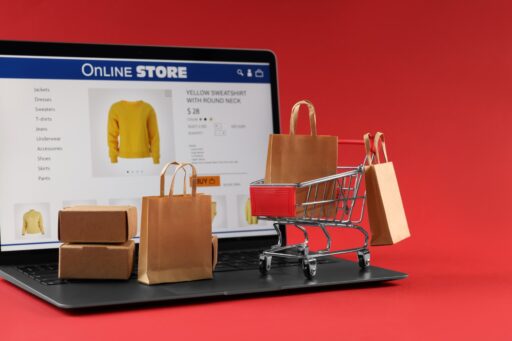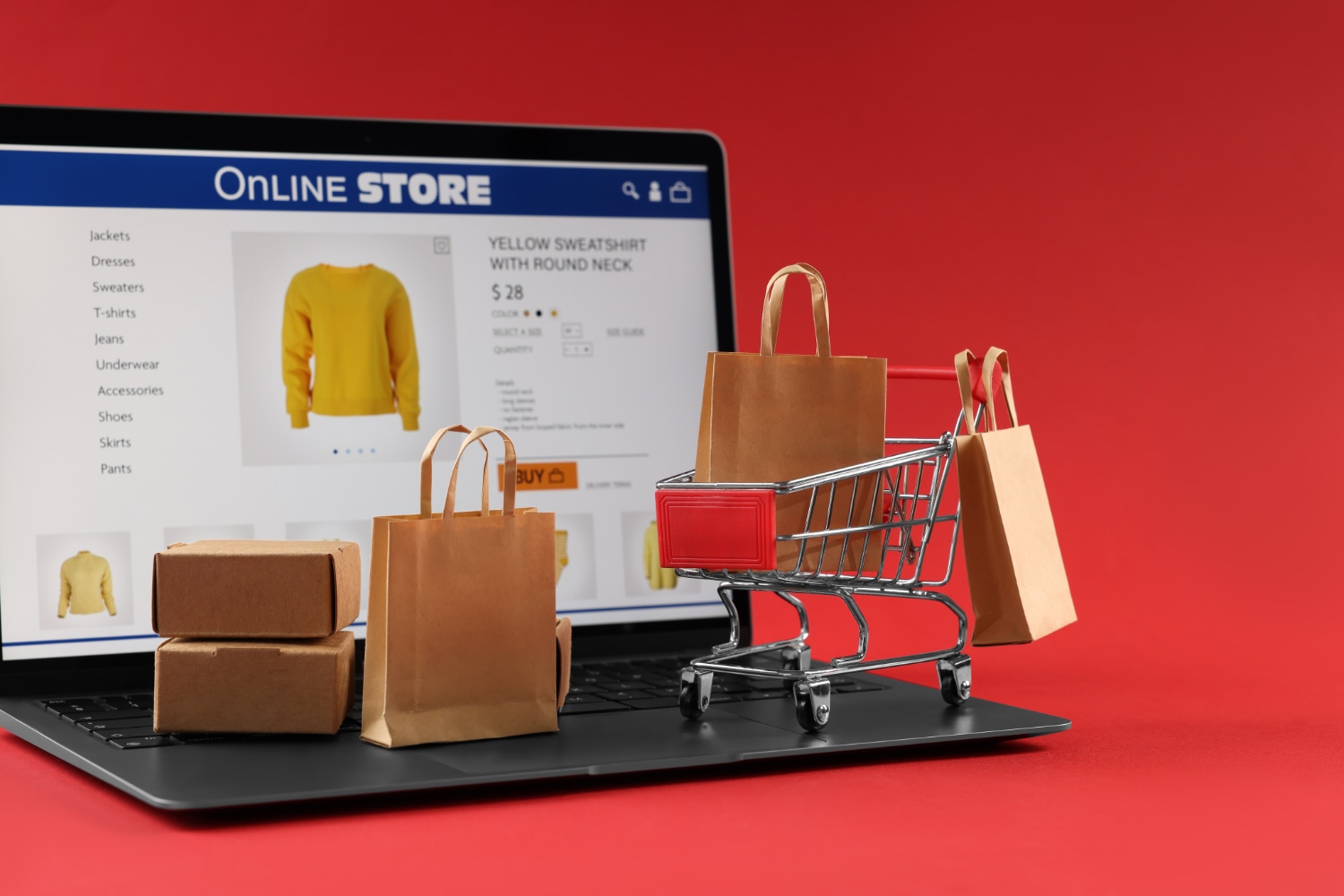What makes the perfect product page?
I would break it down into a few different categories:
- Great on-page SEO is very important
- Good usability and conversion optimization
- Having unique helpful product descriptions and clear product imagery
- Links to other relevant related products
- Genuine customer reviews (both good and bad)
- Handling out of stock, or end of the line, products properly
What is great on-page SEO for PDPs?
It’s actually really simple, but so many ecommerce sites can get this wrong.
I think the biggest issue for most stores is the website theme that they use. The store themes are often created by web designers that aren’t SEOs, or they have a little bit of SEO knowledge that’s outdated or incorrect. As they say, a little information is a very dangerous thing.
For example, you should only be using heading tags (<h1>, <h2>, <h3> etc.), for actual content headings. But so many web designers use the heading tags for the sizing and styling of typography. But search engines use these heading tags to understand the content on the page. So if you’re overusing them or using them for things which aren’t content headings, the search engines just aren’t going to understand what your page is about.
A lot of sites use multiple <h1> heading tags on a page. They might use it for their logo or a piece of information in the footer. But it should only be used for the PDP’s main product title. And that has to be unique and also keyword focused.
You also see a lot of ecommerce sites, especially in designer clothing space, where they have a very generic product name, which is used in the <h1>. They’ll just have a random name for products, like “The Venetian” for a jumper. It might be 100% Organic Cotton, Fair Trade, with a beautiful pattern of X, but search engines will never know that. It would simply rank poorly for the Las Vegas casino, “The Venetian”. So you need to be describing what the product is and not just have random words in the <h1>. You need to also do the same for the title. In fact, your title would often just mirror what your <h1> tag is, or what your product name is.
For the PDP’s meta description, you can actually use your PPC ad copy. If you’re running Google AdWords campaigns, then you’ve probably got information about which advert converts the best for each specific product. You can use that ad copy, which converts the best, for your meta description tag. And that will mean that you get really high click-through rates from your organic search listing, through to your product page.
You also want to make sure that your Canonical Tags are implemented correctly, especially on your product detail pages. They often get linked to using query strings for campaign IDs, affiliate IDs, the size or colour variables. All of these change the URL, but it’s the same product page. So you need to make sure that Canonical Tags are working correctly to say, “This is the only true copy of this product page and all the others should just be linked back to this one page”. It can cause massive duplicate content issues otherwise. And we talked about keyword cannibalization in a previous episode. If you haven’t listened to that episode yet, definitely go back and listen to that Keyword Cannibalization episode.
How about usability and CRO?
Conversion Rate Optimization is a huge topic. I think we’ll actually do a whole future episode on it because it’s such an important topic for ecommerce websites. I don’t think there’s any point in driving traffic from SEO or any other marketing channel into your website if it’s just not converting well – it’s almost wasting your money. So you want to make sure that your Conversion Rate Optimization is in a good place and that people are going through to buying at the checkout.
Usability is actually an SEO ranking factor as well. Google puts a lot of focus on this right now, with PageSpeed and a new algo update around Core Web Vitals, which is another set of page speed metrics, using Google Chrome data. They actually take data from real users who visit your website and look at how long it takes for the page to load and navigate. How long it takes for the HTML to get rendered, how long it takes for the images to load. Even things like Live Chat windows on your website, a newsletter popup or user testing apps like Hotjar.
These could all negatively affect your SEO rankings, because of this new update happening. So you need to make sure that your webpage is absolutely as fast as possible. The images are well optimized, your CSS is minified (small) and not bloated, that you’ve only got the minimum required amount of JavaScript on your pages.
What about Product Descriptions?
I think too many ecommerce stores, especially the drop shippers, just import the manufacturer/supplier data and descriptions. So there’s no unique content there at all. And it just won’t rank unless you’re in a super small niche, where you’re the only person that actually sells those products online, but that’s very rare. They’re not really written that well either, being literally just summary information for the B2B buyer, not the end consumer.
Definitely spend time and money on your product content. It’s a huge conversion and SEO factor. For each product, brainstorm every single use and every advantage of that product.
With electronics for example, you can list every single socket, input, cable and switch on that device – what could it be used for and with? What is it compatible with? Does it have any other names, perhaps different manufacturers use a different term for that, or different countries use a different term?
For clothing, what’s the fabric? What’s the blend of that fabric? If it is a blend, what percentage of each type of material? Which country was the fabric made in? Is it organic or fair trade? Where’s the actual item made? Is it made in ethical conditions? You can write about how the person can feel good about wearing the piece of clothing. What’s the pattern? Is there a history or story behind it? What occasions would you wear this item for? Is it smart, casual? Could it be used for different things? What other products that you sell, could it be worn with? Even things like cleaning instructions, because a lot of people don’t want to buy a product where they have to take it to the dry cleaners. They want to be able to just put it in their standard wash and people will even be searching for this. It seems quite silly, but people are making these kinds of searches on Google.
Are short or long product descriptions best?
I’d recommend having two product descriptions for each product.
A short summary description for the fast buyer. Somebody that has already decided to buy the product, they just want to double-check what the product is and to make sure it’s right for them. This short description is also perfect for your Meta Description. If you don’t have that PPC data on which ad copy converts best for you, why not use this short description (about 160 characters long) as your meta description as well? Put it at the top of your page, next to the “Buy Now” button.
Further down the page, you can have a long description for people that are doing research or looking for something very specific. There’s going to be people out there who won’t buy your products unless you answer their question in the content. Many people don’t feel comfortable picking up the phone or even emailing companies. If they don’t see the answer on your page, they just might not ever buy from you. You’ll also rank for loads of long-tail keywords, if you have a big lengthy product description.
There are loads of examples out there of ecommerce sites that have done this well. One of them from the past was a website called Wish.co.uk, which doesn’t exist anymore. It was an Experience Days website and they got a comedian to do the content writing. So it was actually a pleasure to read their product copy because it was so funny. But it had so much information on there as well.
Why is ranking for long tail keywords important?
People search differently these days, they’re not just searching for [tshirt] or [hat]. They’re looking for very specific things. That’s partly because the internal search functionality on ecommerce websites tend to be so bad.
Have you ever tried buying something from TK Maxx / TJ Maxx? It’s almost impossible to search using their ecommerce platform. So people are using Google to filter down to products before they click through to a site. That’s why it’s important to have these lengthy product descriptions, to make sure that you’ve got the keywords that they’re searching for. Because if you don’t mention the keywords that they’re searching for, you just won’t appear and you won’t get that sale.
How can product images be optimised on PDPs?
A surprising number of people these days use Image Search on Google when shopping online. Google now sends image search traffic to the product page as well, rather than just to the product image itself. It’s a huge traffic win and a potential revenue driver as well.
Just like with our descriptions, don’t use the stock imagery that you get from your supplier or manufacturer. Your competitors will be using exactly the same photos and you will be seen as duplicate image content. It just won’t get any decent traffic. Traffic can be won by taking your own photos – take as many as possible, closeups from every angle and of every single feature of that product.
The last TV that I bought, was from a website that showed close-up images of all the input ports on the back. I was looking for a specific number of HDMI ports and other port types, because I’m a bit geeky. So by looking at this photo, I could see exactly what I was getting for my money. And that was important for me. So I ended up buying from that specific merchant, and they weren’t even the cheapest. They were one of the cheapest, but it was the one that answered all of my questions.
The more images, the better. People can’t touch your products, so they want to feel like they know everything about it before they actually buy. This can also reduce your returns rate and the associated costs with that. Because if people don’t see something close up, they might not know that it’s there and think, “Oh, that’s not what I was looking for”. If you show all these different angles and closeups of a product, the person really understands what they’re buying, before it arrives.
When you upload your product images, make sure that they each have a unique “alt” (alternative) and “title” attribute on them. These need to describe what’s in the photo. It can’t just be the product name itself. Each photo title should actually describe what’s there. The “alt” attribute was actually created for blind internet users and those who couldn’t download images. When they can’t see the image, the “alt” attribute would actually tell them what’s in the image, so they don’t miss out. But search engines also use it for a similar reason. Although search engines are getting better at understanding what’s in photos, they can’t tell exactly what’s in there. So the attribute helps you to rank for the keywords used within the “alt” attribute in Image Search.
For clothing, something that is rarely seen, is different size/shape/ethnicity models, being used for the same item of clothing. It can be quite expensive to do this on huge clothing stores, but a big advantage if you’re a smaller store. A woman’s top in size XS looks very different on a person to a top that’s in size XXL. You want to make sure that the buyer can envisage themselves wearing it, and if the model that’s wearing the clothing doesn’t look like the shopper, they might not buy that product. They might not think it will suit them.
Also, make sure you have photos of every single color variation, because you can rank for things like that as well. People are going to be searching for a [red baseball cap] or [red shoes].
What about linking to other products?
Internal links can be as important for SEO as external links.
There’s going to naturally be some products which are more popular than others. And those more popular products will have more links going into them, which will help that specific product to rank really well in Google. But it doesn’t help any of the other products. Linking out to other related/interesting products from your PDPs solves this.
It’s also a great opportunity for your customers to find other related products as well, which they might be interested in. A matching set of trousers or compatible accessory, or a device or pair of shoes by the same designer. It can increase the cart value, as well as helping SEO.
You don’t want to link to every product that you sell, from every product page. Just a few that the buyer might be interested in.
How about handling product reviews?
Product reviews are really important for both conversion and SEO.
There are lots of people that won’t buy a product unless they can see some independent customer reviews saying what they think of it. It’s a trust signal for many people, but it’s also a trust signal for Google as well. When searching for products on Google, the websites that have product reviews (if implemented correctly), will actually have star ratings next to their search listing, which really stands out. It’s been proven in many different case studies that those results with reviews will have a higher click-through rate.
Ask every customer post-purchase to leave a product review, maybe encourage them by offering a discount on a future purchase.
Don’t go down the road of creating fake reviews. Both customers and Google can spot them a mile off. People do expect to see a few negative reviews as well. If you only have five-star reviews, it looks a bit suspicious. Don’t hide the negative reviews, just list the higher reviews at the top.
Make sure that the reviews use Schema markup as well.
What is Schema markup?
It’s another vital part of any product page. Product Schema / Structured Data gives search engines more useful information about your product.
It will tell them the price, the stock level, the SKU codes, the color, the size, the description, etc. And in return for giving search engines this information, they’ll help you by highlighting your page more in the search results. If you give them review data, they’ll show those review ratings as bright yellow stars on the search result, and you’ll get a higher click-through rate because of that.
The best way to implement this product schema, is using something called JSON-LD. It’s basically a piece of JavaScript that you can place in the HTML for your page and gives all this information to search engines. If you want to find out more information, you can go to Schema.org or Google’s own help docs. I think we could actually do a whole episode in the future on Schema alone.
What about when products go out of stock?
This is another really important point for both SEO and usability.
The number one rule is – Never take the page down or let it return a 404 (Page Not Found) error. That’s the worst thing you can do. You’re going to lose all of the content which you were ranking with before, and you’ll also lose all of the SEO value.
If a product is out of stock, leave the page up completely and leave it almost exactly the same. The only thing you should change is removing the “Buy Now” button and replace it with a “Tell Me When It’s Back” button. When someone clicks on that button, you should take their email address and make sure that you do actually email them, the instant that you get new stock for that product. It’s almost a guaranteed sale when you do. They’re just waiting for you to have that product back in stock.
If you remove the product description, the price, the photos, or anything like that, you can actually break the structured data and content that’s on your website, hurting your SEO rankings. Just leave it exactly the same, only hide the buy now button and replace it with a way for someone to get an in-stock notification.
If the product is discontinued, you’ve basically got two options. You can “301” redirect the URL to the parent product category, or leave the information up.
If you leave the page up, you’ll continue to benefit from all that content that you’ve spent so much time and money creating – it’s such a shame to lose that, when you stop selling a product. Instead, tell visitors that the product is out of stock and it might not come back. Then list all of the alternative products that the person might be interested in buying, on that product page. So even though you don’t have that old product, you can still offer them a similar product, which they might want to buy.
I usually recommend going with the redirect method, but sometimes it’s just such a shame to lose all that content. You might only be ranking because of that content, with no external links to the PDP. So if you use a redirect, you don’t really get any value from that – there’s no traffic or link authority to benefit from the redirect.




